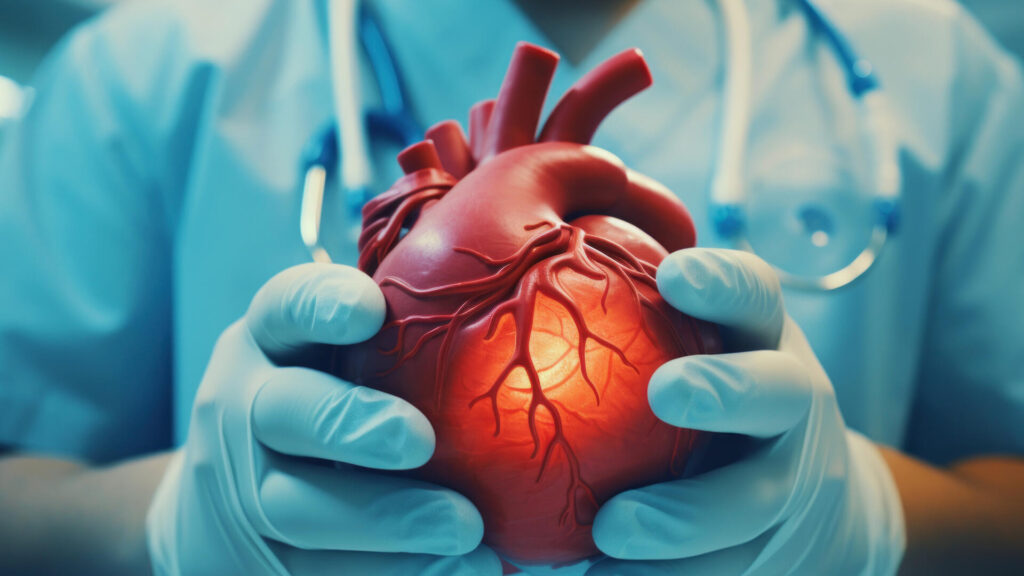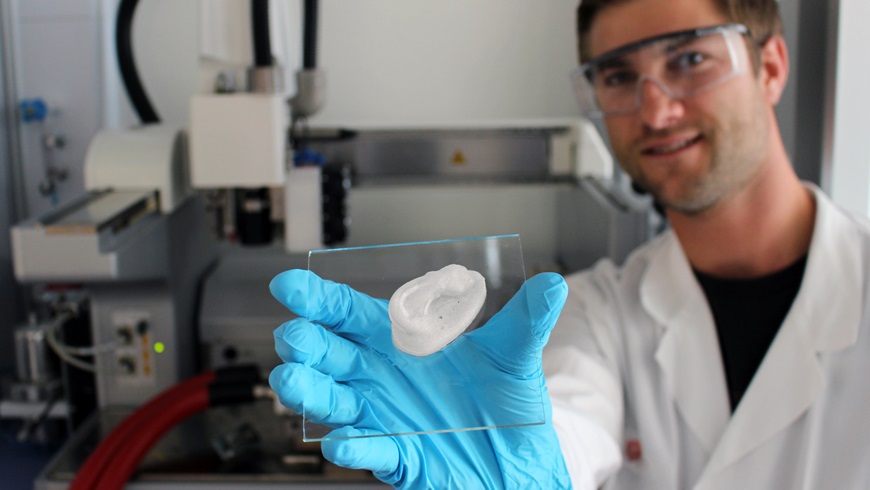The February 2015 issue of Industrial Biotechnology is hosting a special in depth research section on the topic of cellulose nanotechnology. A Feb. 19, 2015 news item on Phys.org features a specific article in the special section (Note: A link has been removed),
Novel nanomaterials derived from cellulose have many promising industrial applications, are biobased and biodegradable, and can be produced at relatively low cost. Their potential toxicity—whether ingested, inhaled, on contact with the skin, or on exposure to cells within the body—is a topic of intense discussion, and the latest evidence and insights on cellulose nanocrystal toxicity are presented in a Review article in Industrial Biotechnology.
Maren Roman, PhD, Virginia Tech, Blacksburg, VA, describes the preparation of cellulose nanocrystals (CNCs) and highlights the key factors that are an essential part of studies to assess the potential adverse health effects of CNCs by various types of exposure. In the article “Toxicity of Cellulose Nanocrystals: A Review” , Dr. Roman discusses the current literature on the pulmonary, oral, dermal, and cytotoxicity of CNCs, provides an in-depth view on their effects on human health, and suggests areas for future research.
There has been much Canadian investment both federal and provincial in cellulose nanocrystals (CNC). There’s also been a fair degree of confusion regarding the name. In Canada, which was a research leader initially, it was called nanocrystalline cellulose (NCC) but over time a new term was coined cellulose nanocrystals (CNC). The new name was more in keeping with the naming conventions for other nanoscale cellulose materials such as cellulose nanofibrils, etc. Hopefully, this confusion will resolve itself now that Celluforce, a Canadian company, has trademarked NCC. (More about Celluforce later in this post.)
Getting back to toxicity and CNC, here’s a link to and a citation for Maron’s research paper,
Toxicity of Cellulose Nanocrystals: A Review by Roman Maren. Industrial Biotechnology. February 2015, 11(1): 25-33. doi:10.1089/ind.2014.0024.
The article is open access at this time. For anyone who doesn’t have the time to read it, here’s the conclusion,
Current studies of the oral and dermal toxicity of CNCs have shown a lack of adverse health effects. The available studies, however, are still very limited in number (two oral toxicity studies and three dermal toxicity studies) and in the variety of tested CNC materials (CelluForce’s NCC). Additional oral and dermal toxicity studies are needed to support the general conclusion that CNCs are nontoxic upon ingestion or contact with the skin. Studies of pulmonary and cytotoxicity, on the other hand, have yielded discordant results. The questions of whether CNCs have adverse health effects on inhalation and whether they elicit inflammatory or oxidative stress responses at the cellular level therefore warrant further investigation. The toxicity of CNCs will depend strongly on their physicochemical properties—in particular, surface chemistry, including particle charge, and degree of aggregation, which determines particle shape and dimensions. Therefore, these properties—which in turn depend strongly on the cellulose source, CNC preparation procedure, and post-processing or sample preparation methods, such as lyophilization, aerosolization, sonication, or sterilization—need to be carefully measured in the final samples.
Another factor that might affect the outcomes of toxicity studies are sample contaminants, such as endotoxins or toxic chemical impurities. Samples for exposure tests should therefore be carefully analyzed for such contaminants prior to testing. Ideally, because detection of toxic chemical contaminants may be difficult, control experiments should be carried out with suitable blanks from which the CNCs have been removed, for example by membrane filtration. Moreover, especially in cytotoxicity assessments, the effect of CNCs on pH and their aggregation in the cell culture medium need to be monitored. Only by careful particle characterization and exclusion of interfering factors will we be able to develop a detailed understanding of the potential adverse health effects of CNCs.
If I understand this rightly, CNC seems safe (more or less) when ingested orally (food/drink) or applied to the skin (dermal application) but inhalation seems problematic and there are indications that this could lead to inflammation of lung cells. Other conclusions suggest both the source for the cellulose and CNC preparation may affect its toxicity. I encourage you to read the whole research paper as this author provides good explanations of the terms and summaries of previous research, as well as, some very well considered research.
Here’s more about Industrial Biotechnology’s special research section in the February 2015 issue, from a Feb. 19, 2015 Mary Ann Liebert publishers press release (also on EurekAlert*),
The article is part of an IB IN DEPTH special research section entitled “Cellulose Nanotechnology: Fundamentals and Applications,” led by Guest Editors Jose Moran-Mirabal, PhD and Emily Cranston, PhD, McMaster University, Hamilton, Canada. In addition to the Review article by Dr. Roman, the issue includes Reviews by M. Rose, M. Babi, and J. Moran-Mirabal (“The Study of Cellulose Structure and Depolymerization Through Single-Molecule Methods”) and by X.F. Zhao and W.T. Winter (“Cellulose/cellulose-based nanospheres: Perspectives and prospective”); Original Research articles by A. Rivkin, T. Abitbol, Y. Nevo, et al. (“Bionanocomposite films from resilin-CBD bound to cellulose nanocrystals), and P. Criado, C. Fraschini, S. Salmieri, et al. (“Evaluation of antioxidant cellulose nanocrystals and applications in gellan gum films”); and the Overview article “Cellulose Nanotechnology on the Rise,” by Drs. Moran-Mirabal and Cranston.
Meanwhile Celluforce announces a $4M ‘contribution’ from Sustainable Development Technology Canada (SDTC), from a Feb. 16, 2015 Celluforce news release,
CelluForce welcomes the announcement by Sustainable Development Technology Canada (SDTC) of a contribution of $4.0 million to optimize the extraction process of Nanocrystaline Cellulose (NCC) from dry wood pulp and develop applications for its use in the oil and gas sector. The announcement was made in Quebec City today [Feb. 16, 2015] by the Honourable Greg Rickford, Minister of Natural Resources and Minister for the Federal Economic Development Initiative for Northern Ontario.
NCC is a fundamental building block of trees that can be extracted from the forest biomass and has unique properties that offer a wide range of potential applications. Measured in units as small as nanometres, these tiny structures have strength properties comparable to steel and will have uses in a variety of industrial sectors. In particular, NCC is touted as having the potential to significantly advance the oil and gas industry.
“Our Government is positioning Canada as a global leader in the clean technology sector by supporting innovative projects aimed at growing our economy while contributing to a cleaner environment,” said the Honourable Greg Rickford, Canada’s Minister of Natural Resources. [emphasis mine] “By developing our resources responsibly, exploring next-generation transportation and advancing clean energy technology, the projects announced today will create jobs and improve innovation opportunities in Quebec and across Canada.”
“World-class research led to the development of this ground breaking extraction process and placed Canada at the leading edge of NCC research”, stated René Goguen, Acting President of CelluForce Inc. “This announcement by SDTC sets the stage for the pre-commercial development of applications that will not only support Canada’s forest sector but also the oil and gas sector, both of which are important drivers of the Canadian economy.”
This project will further improve and optimize the process developed by CelluForce to extract nanocrystalline cellulose (CelluForce NCC™) from dry wood pulp. In addition to improving the extraction process, this project will investigate additional applications for the oil-and-gas industry such as cementing using this renewable forestry resource.
There’s very little information in this news release other than the fact that CelluForce’s $4M doesn’t need to be repaid seeing it’s described as a ‘contribution’ rather than an investment. The difference between a contribution and a grant, which is what these funds used to be called, somewhat mystifies me unless this is a translation issue.
As for the news release content, it is remarkably scant. This $4M will be spent on improving the extraction process and on applications for the oil and gas industry. Neither the improvements nor the possible applications are described. Hopefully, the government has some means of establishing whether or not those funds (sorry, the contribution) were used for the purposes described.
I am glad to see this in this news release, “Our Government is positioning Canada as a global leader in the clean technology sector …” although I’m not sure how it fits with recent attempts to brand environmentalists as part of an ‘anti-petroleum’ movement as described in a Feb. 19, 2015 post by Glyn Moody for Techdirt (Note: A link has been removed),
As Techdirt has been warning for some time, one of the dangers with the flood of “anti-terrorist” laws and powers is that they are easily redirected against other groups for very different purposes. A story in the Globe and Mail provides another chilling reminder of how that works:
The RCMP [Royal Canadian Mounted Police] has labelled the “anti-petroleum” movement as a growing and violent threat to Canada’s security, raising fears among environmentalists that they face increased surveillance, and possibly worse, under the Harper government’s new terrorism legislation.
As the Globe and Mail article makes clear, environmentalists are now being considered as part of an “anti-petroleum” movement. That’s not just some irrelevant rebranding: it means that new legislation supposedly targeting “terrorism” can be applied.
…
It seems logically incoherent to me that the government wants clean tech while condemning environmentalists. Whether or not you buy climate change science (for the record, I do), you have to admit that we are running out of petroleum. At heart, both the government and the environmentalists have to agree that we need new sources for fuel. It doesn’t make any sense to spend valuable money, time, and resources on pursuing environmentalists.
This business about the ‘anti-petroleum’ movement reminds me of a copyright kerfuffle including James Moore, currently the Minister of Industry, and writer Cory Doctorow. Moore, Minister of Canadian Heritage at the time, at some sort of public event, labeled Doctorow as a ‘radical extremist’ regarding his (Doctorow’s) views on copyright. The comments achieved notoriety when it appeared that Moore and the organizers denied the comments ever took place. The organizers seemed to have edited the offending video and Moore made public denials. You can read more about the incident in my June 25, 2010 post. Here’s an excerpt from the post which may explain why I feel there is a similarity,
… By simultaneously linking individuals who use violence to achieve their ends (the usual application for the term ‘radical extremists’) to individuals who are debating, discussing, and writing commentaries critical of your political aims you render the term into a joke and you minimize the violence associated with it.
Although with ‘anti-petroleum’, it seems they could decide any dissension is a form of violence. It should be noted that in Canada the Ministry of Industry, is tightly coupled with the Ministry of Natural Resources since the Canadian economy has been and continues to be largely resource-based.
For anyone interested in CelluForce and NCC/CNC, here’s a sampling of my previous posts on the topic,
CelluForce (nanocrystalline cellulose) plant opens (Dec. 15, 2011)
Double honours for NCC (ArboraNano and CelluForce recognized) (May 25, 2012)
You say nanocrystalline cellulose, I say cellulose nanocrystals; CelluForce at Japan conference and at UK conference (Oct. 15, 2012)
Designing nanocellulose (?) products in Finland; update on Canada’s CelluForce (Oct. 3, 2013) Note: CelluForce stopped producing NCC due to a growing stockpile.
There’s a lot more about CNC on this blog* should you care to search. One final note, I gather there’s a new interim boss at CelluForce, René Goguen replacing Jean Moreau.
* EurekAlert link added Feb. 20, 2015.
* ‘on the CNC blog’ changed to ‘about CNC on this blog’ on March 4, 2015.

